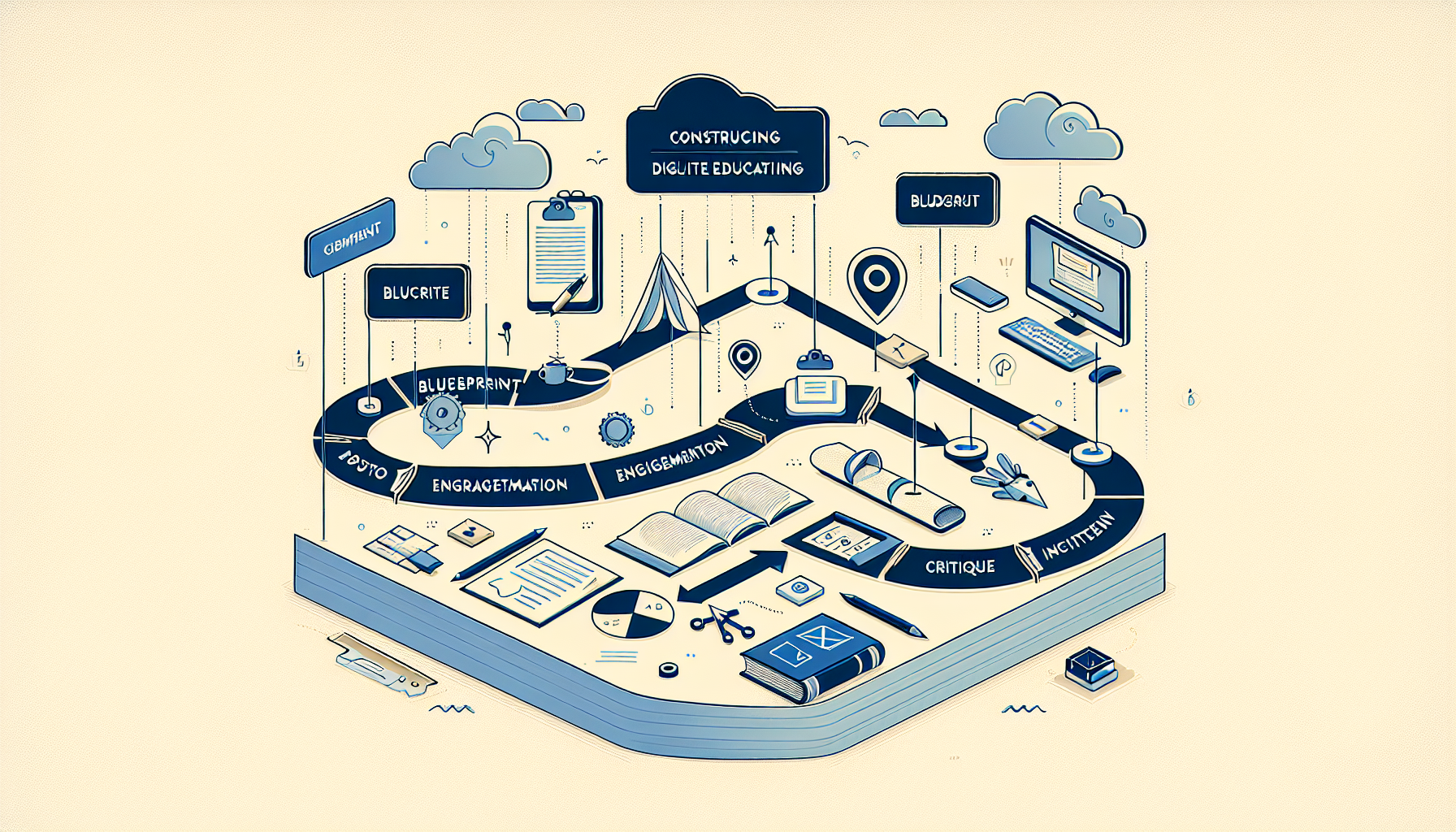Are you feeling overwhelmed by the thought of creating online training courses? You’re not alone! With so many options out there, choosing the right software can seem daunting. But fear not, because finding the right tools can transform your ideas into engaging courses that captivate learners.
Stick around, and I promise we’ll unravel the mystery of online training course software together. By the end, you’ll have a clear idea of what features to look for, popular platforms to consider, and practical tips for designing your courses like a pro.
In this guide, we’ll explore everything from key features and popular software options to best practices and common challenges. Let’s dive in and get you started on your online teaching journey!
Key Takeaways
- Choose user-friendly software to easily create and manage courses.
- Look for multimedia support to enhance engagement with videos, graphics, and audio.
- Include assessment tools like quizzes to gauge learner progress.
- Consider popular platforms like Teachable, Thinkific, Udemy, and Moodle based on your needs.
- Determine your goals, audience, and budget before selecting software.
- Be prepared for challenges like technical issues and lack of engagement; have solutions ready.
- Continuously gather feedback and adapt your courses for better results.

Overview of Online Training Course Software
Online training course software is a digital platform that allows educators and trainers to create, manage, and deliver educational content over the internet. The primary purpose of this software is to facilitate learning in a flexible and accessible manner, breaking down geographical and time barriers in education.
In today’s fast-paced world, where remote learning is becoming the norm, the importance of online training course software cannot be overstated. It empowers learners to study at their own pace, offers educators innovative tools for teaching, and creates an interactive learning experience.
Key Features to Look For
When choosing online training course software, it’s essential to look for a user-friendly interface. This is crucial because no one wants to navigate through a complicated system; simplicity breeds efficiency!
Course creation tools are another key feature that enhances the learning experience. Look for software that allows you to easily design and launch courses with diverse formats such as videos, slides, and reading materials.
Multimedia support is vital as well—having the ability to include engaging videos, graphics, and audio can make learning more enjoyable. Just remember, a picture is worth a thousand words!
Don’t overlook assessment and quizzes; these features help gauge learners’ understanding and keep their knowledge fresh. Fun quizzes can also add a competitive spirit to the learning experience.
Finally, tracking and reporting tools are essential for monitoring student progress. Having detailed analytics helps you understand areas where students struggle, enabling you to adjust the course as needed.
Popular Software Options
There’s a plethora of online training course software out there. Here’s a quick look at some of the top platforms that stand out in the crowded marketplace.
Teachable is user-friendly and offers various customization options. It’s perfect for creators looking to establish a brand.
Thinkific allows you to create and sell courses quickly and easily, making it a favorite for many entrepreneurs.
Udemy offers a massive audience pool; it’s an excellent choice if you’re looking to reach a broader audience without heavy marketing costs.
On the other hand, Moodle is open-source and designed for educational institutions, making it an attractive option for schools and universities.
Each platform has its strengths and weaknesses, which will be explored further in the comparison of features and pricing in the next section.

Benefits of Using Online Course Software
One of the most significant benefits of online course software is the flexibility it offers learners. They can access courses from anywhere and any device at a time that suits them best.
This flexibility accommodates various learning styles and schedules, making education accessible for those who juggle work, family, or other commitments.
For course creators, scalability is another fantastic advantage. You can reach countless learners without being limited by classroom sizes, all while managing your materials in one central location.
Moreover, online training platforms enhance accessibility for individuals with disabilities, allowing for a more inclusive educational environment.
Engaging learning experiences are also a hallmark of these platforms. Interactive elements like videos, quizzes, and forums stimulate interest and keep students motivated.
In short, utilizing online course software is like having a magic wand that makes learning easier and more engaging for everyone involved!
How to Choose the Right Software
Choosing the right online training course software can feel like a daunting task, but focusing on a few key factors can simplify the process.
Start by identifying your goals. Are you looking to create a casual course for hobbyists, or something more academic? Your goals will shape your requirements.
Next, evaluate your audience. Understanding their needs will guide you in selecting software that caters to them effectively.
Budgeting is crucial as well. Online course platforms offer a wide range of pricing options, so identifying what you can invest will help narrow down your choices.
Finally, don’t hesitate to test the software with a free trial if available. Reading reviews from other creators also provides valuable insights into each platform’s efficacy.
Common Challenges and Solutions
Even the best online training course software comes with its own set of challenges. One common issue is technical difficulties; they can throw a wrench into your students’ learning experiences.
To combat this, ensure you have a robust support system in place, whether it’s through the software’s customer service or creating a dedicated FAQ section.
Engagement issues can also arise. Students may lose interest if the course lacks stimulation. Providing dynamic content and facilitating discussions can keep learners engaged.
Content creation hurdles are another challenge. Crafting captivating and informative course material takes time and creativity, so allow yourself the space to brainstorm and refine your content.
Finally, marketing your course may feel overwhelming. Utilize social media, email marketing, and collaboration with influencers in your niche to get the word out.
Best Practices for Creating Online Training Courses
Planning and organizing content is an essential starting point for any online training course. A well-structured course helps learners navigate what to expect.
Creating interactive elements can significantly improve your course’s appeal. Incorporate polls, video quizzes, and group discussions for an engaging experience.
Feedback is gold when it comes to refining your course. Encourage students to share insights on what works and what needs improvement, and be open to adapting accordingly.
Lastly, remember that continuous improvement is vital. Stay updated with trends and new tools in online education to keep your courses fresh and effective.
Follow these best practices, and you’ll be well on your way to creating a successful and impactful online training course!

Best Practices for Creating Online Training Courses
Creating an online training course is a blend of art and science, and following best practices can make it a hassle-free experience.
One of the first steps is planning and organizing your content. Think of it like mapping out a road trip; you want to know where you’re starting and where you’d like to go.
For a well-structured course, break down your topics into modules that lead your learners step-by-step through the materials.
Creating interactive elements can significantly boost engagement levels. Consider adding polls, quizzes, and discussion forums to make your course more dynamic.
It’s like giving your learners a playground—people love to play!
Incorporating feedback is crucial too. Encourage your students to share their thoughts on what resonates with them or what needs some TLC.
Be open to adapting your course content based on their insights. It’s all about creating the best experience for your learners.
Last but not least, continuous improvement is the name of the game. Keep your course fresh and relevant by staying updated on industry trends, tools, and methodologies.
Take the time to refine your content on a regular basis, and your learners will appreciate the effort!
Conclusion
As we wrap things up, let’s recap the essential points we’ve dug into regarding online training course software.
We began with an overview of online training course software, emphasizing its role in today’s learning landscape.
Key features like user-friendly interfaces, multimedia support, and robust tracking tools can make a game-changing difference for both learners and course creators.
We explored trusted platforms such as Teachable and Thinkific, noting their unique benefits, while discussing how to compare features and pricing to find the best fit.
We also highlighted the benefits of using online course software, including flexibility for learners and scalability for content creators.
When it comes to selecting the right software, setting clear goals and understanding your audience is key.
We tackled common challenges like technical difficulties and engagement issues, offering practical solutions to overcome them.
Lastly, best practices for content creation, such as interactivity and continuous improvement, are integral to crafting great online courses.
So, go ahead—dive into the world of online training courses, armed with the knowledge to create impactful, engaging learning experiences!
FAQs
Online training course software enables educators to create, manage, and deliver courses digitally. Its purpose is to facilitate learning, provide resources, and enhance educational access, making it essential in the modern educational landscape.
Key features include a user-friendly interface, course creation tools, multimedia support, assessment and quiz capabilities, and robust tracking and reporting. These elements enhance the learning experience and streamline course management.
To choose the right software, identify your goals, evaluate your target audience, assess your budget, and explore different platforms. Consider testing the software and reading reviews for firsthand insights and experiences.
Common challenges include technical difficulties, lack of student engagement, issues with content creation, and effectively marketing the course. Addressing these concerns can enhance the overall learning experience and course success.
